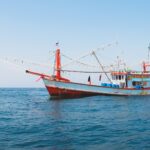
SIAA Organization, Deliverables, and Position On Sturgeon Bans
The below points are listed to highlight the structure and stances of our organization, as well as to emphasize our accomplishments to date:
SIAA Team
- Organizer – AAL Mgmt. & Consulting
- Example
- Legal – Dechert LLP
- Lobby – Brownstein Hyatt Farber Schreck, LLP
- Alliance members and partners from U.S. and Abroad
SIAA Deliverables to date
- Four direct meetings with USFWS
- Two successful Public Hearing requests for both proposed rulings
- Over 30 lobby meetings with Senators, U.S. Representatives, and U.S. Entities
- List of deliverables from SIAA received by USFWS
i. SIAA direct comments: The SIAA has posted comprehensive public comments for the Amur and Ponto-Caspian Sturgeon Dockets
ii. SIAA legal comments: The SIAA has posted 2 legal comments, one written by Dechert LLP focused on the Ponto-Caspian species only, and one written by an independent expert on ESA law which focused on the Ponto-Caspian and Hybrids issue.
List of indirect deliverables as a direct result of SIAA efforts:
i. 8 sturgeon farm comments
ii. 10 domestic and international science community comments
iii. 60 caviar purveyor comments
iv. 14 governmental and NGO comments
Policy Issue
The U.S. Fish and Wildlife Service (USFWS) has proposed rules to list Amur, Russian, Ship, Persian and Stellate Sturgeon and their hybrids as endangered species under the Endangered Species Act of 1973. There are additional potential listing recommendations from the Service already on the horizon for additional sturgeon species, such at the Siberian sturgeon. If these proposed rules are not modified or eliminated, domestic production or the importation into the U.S. of the above sturgeon or sturgeon products, including caviar will become illegal.
Our Position
- The Endangered Species Act of 1973 does not differentiate between captive-bred and wild sturgeon populations, causing a discrepancy between domestic law and a well-established international treaty such as CITES. The lack of distinction in this law creates a contradiction between the purpose of the Act and the potential benefits to the protected wild populations provided by farming operations.
- Captive-bred populations of several sturgeon species in question, vastly outnumber wild populations of like species. This fact amplifies the absurdity of not excluding captive-bred sturgeon from the Final Rules.
- The USFWS Final Rules must exclude captive-bred sturgeon and captive-bred hybrid sturgeon. The reasoning for excluding captive-bred sturgeon is stated above. There is no evidence that captive-bred hybrid sturgeon has negatively impacted wild populations and thus should be excluded from any Final Rule.
- The USFWS used conjecture and outdated scientific studies to speculate on the well-being of the wild sturgeon populations. The USFWS must include recent scientific data indicating that some wild sturgeon populations in question are beginning to recover.
- The USFWS must recognize that many regional sturgeon conservation efforts rely on revenue provided by commercial captive-bred sturgeon farms. The proposed rules will put these commercial operations in jeopardy, thus placing the existing conservation efforts in jeopardy also.
- The USFWS must recognize that these rules, as proposed, will dramatically increase illegal fishing pressure on currently listed endangered sturgeon species native to the U.S.
- If a final determination of these U.S. Fish and Wildlife Service’s proposed rules moves forward and these sturgeon species are listed as endangered, an irreversible and material economic harm will be caused to all companies who engage in the production and trade of the listed sturgeon species’ products.
The Solution
- Legal and political lobbying efforts MUST BE CONTINUED to delay a USFWS final determination on these two issues until a solution is found to allow for the legal trade of these captive-bred sturgeon species, hybrids and sturgeon products within the U.S. and across U.S. borders.
- As a long-term solution, the Endangered Species Act must be amended in its language to include a clear distinction between wild sturgeon populations and captive-bred or farm-raised, and hybrid species.
How You Can Help
The closure of the United States to sturgeon and caviar imports will have devastating impacts on the global sturgeon industry. These issues will not be solved, without IMMEDIATE AND CONTINUED EFFORT on our part. We ask you to be part of the solution with us. Please join us in fighting these proposed sturgeon bans.
- Amanda Almeida Leavitt – Executive Director – amanda@aalmc.com
- Ashley Azadi – 2023 Organizer – ashley@caviarmerchant.com
- William Moschela – Brownstein LLP – wmoschella@bhfs.com
- Eric Hageman – Dechert LLP – Eric.Hageman@dechert.com




